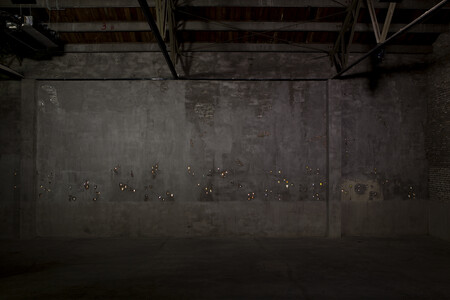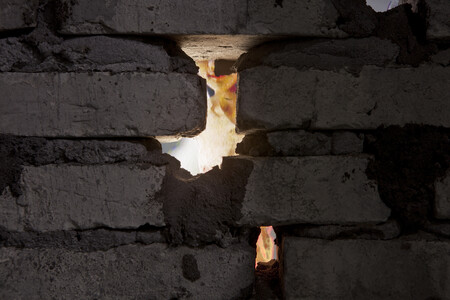The interesting thing about the word “overture” is that it can be interpreted as “the wait”. “Overture” refers to events that have not taken place but will occur, like a beginning or a warning of an event before anything has actually started. From this perspective, “overture” is a certain phase that is “not ready”. The main event is not yet ready to take place, and the audience is not ready to accept the occurrence of the event. The word “overture” originates from the waiting period before a performance, as audiences have not yet fully entered the theatre space.
The artwork “overture” is located in an empty space without any objects. More than eight hundred of video images are presented on the walls outside the exhibition hall. Light beams go into the exhibition space through wall cracks. The exhibition hall becomes a “light-leaking space”, a disturbing scene. At that moment, the event seems like it is about to begin, but it has already begun. Moreover, there is a suggestion of events that are about to enter the exhibition space, but nothing ever arrives. We only ever see fragments of anticipation.
As for the eight hundred video images, they are not completed stories; merely components of possible stories. They are only a “source”, a set of visual symbols, and some pieces of scattered memories. Perhaps history itself is a pile of components, the materials of which are only authoritative from the story perspective, therefore, authority in the “overture” should definitely be valued even though it is not complete. Facing all these sources, what happens to our inner story? Has it happened yet?
The interesting question is, who should be in charge of all the components and the fragments when history needs to be edited? Maybe everyone should control and then rewrite his or her own materials. In this way, history will be transformed into new materials, and keep recycling from the old prelude to new events, then transform into a new prelude.
Detail pictures:






